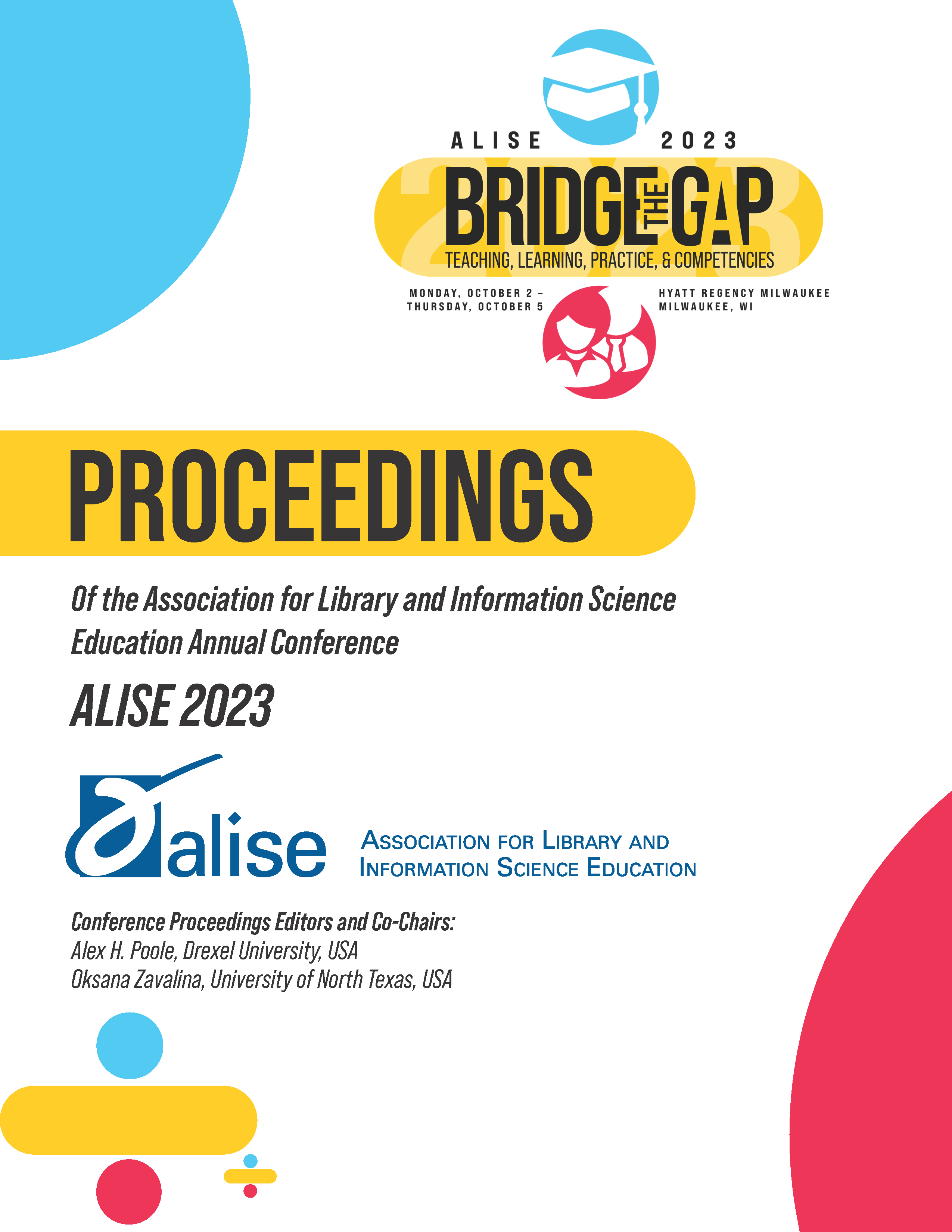Advocating for Disability Access
The Bridge We Need
DOI:
https://doi.org/10.21900/j.alise.2023.1260Keywords:
academic libraries, accessibility, disability, neurodiversity, public librariesAbstract
The Disabilities in LIS SIG session features presentations by American and Canadian researchers on a wide array of disability and accessibility-related topics. The first part of the session includes five 10-min research- and experience-based talks. It opens up with Kawooya, Robinson, Copeland, and Fox discussing a pilot study focused on the “Equitable Access for the Blind, Visually Impaired, and Print-Disabled (BVIPD) Students in Online Learning” (funded by USC). In “Ableism Rekindled: Experiences of Ph.D. Student During the COVID-19 Pandemic,” Dali and Charbonneau explore the experiences of disabled and neurodiverse Ph.D. students from LIS programs in Canada and the U.S. (funded by DU). To continue the theme of academia in “Discouraging Accessibility Through Poor Accessibility Training: An Antidote,” Smith addresses ways in which such training can have a negative effect on faculty and staff’s willingness to promote accessibility. Looking into professional settings, Rathbun-Grubb examines the “Post-COVID Work Experiences of Librarians with Chronic Health Conditions” based on the survey data collected in 2022. Bringing public libraries into the mix, Cahill, Adkins, Sartin Long, and Long examine why it is so challenging to engage public libraries in research-to-practice projects that improve access to library for families with young children with disabilities (funded by IMLS).
Engaging a new format of blitz reports, the second part of the session highlights the news and updates on seven ongoing or recently completed projects. In their elegiac “May Be a Picture of a Dog and a Book,” Hill and Oswald share results of the study that examined the inaccessibility of social media feeds in Ontario public libraries. Guided by a critical disability studies approach, Lundy reports on preliminary findings from the dissertation-in-progress that investigates how and why individuals with non-apparent chronic illnesses share their health stories on TikTok. In the “The Prevalence of Public Library Makerspaces and Maker Programs for Youth with Disabilities,” Jung and Abbas share the initial findings from the project that investigates strategies for including youth with disabilities in public library markerspaces (funded by IMLS). Continuing this theme, Koh and Seo engage the audience in their participatory design project “Promoting Computational Thinking Skills for Blind and Visually Impaired Teens Through Accessible Library Makerspaces” (funded by IMLS). Based on the recently published co-authored study, Tobin explores “Representations of Children with Disabilities in a Public Library Board Book Collection.” In “Broadening Academic Library Employment: Neurodiversity in Academic Library Hiring,” Thompson and Dali report select findings from the pilot project focused on exploring barriers and supports in academic library hiring practices (funded by IMLS). To wrap up this stellar line-up of presentations, Phillips and Fife turn their attention to accommodation requests from academic librarians and library staff in the context of the COVID-19 pandemic.
Downloads
Published
Issue
Section
License
Copyright (c) 2023 Keren Dali, Kim M. Thompson , Andrew J. M. Smith

This work is licensed under a Creative Commons Attribution-ShareAlike 4.0 International License.



